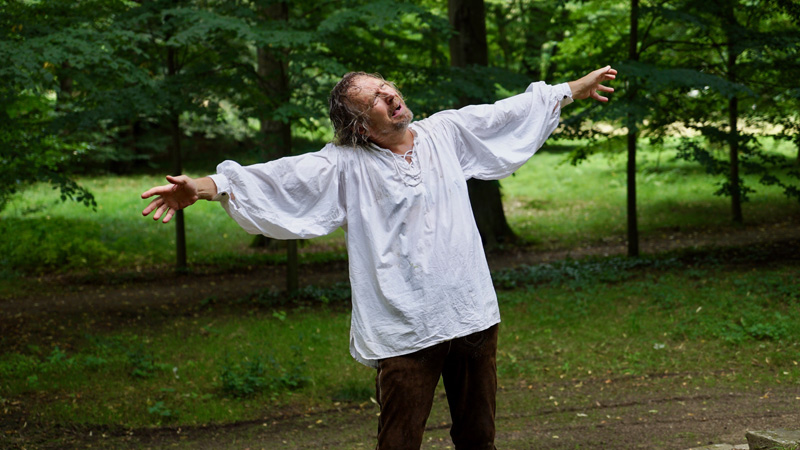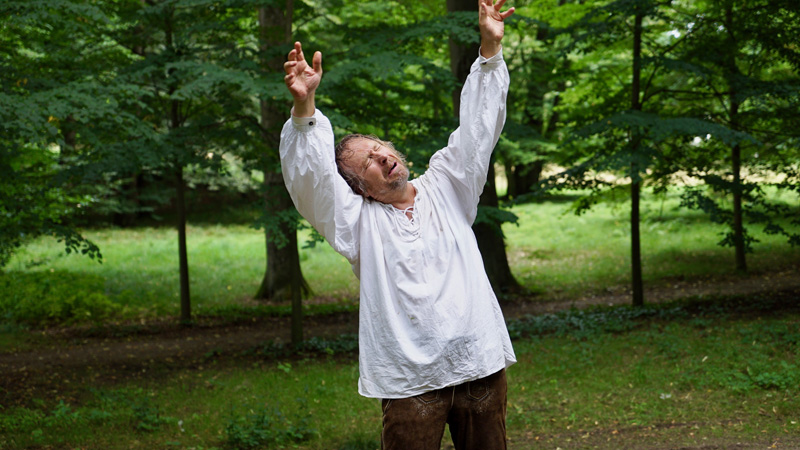Psychiatrist
Siegfried Letzel
Hahnemann,
the Psychiatrist
Thanks to Samuel Hahnemann, we have already learned a great deal about the development of modern scientific knowledge in the 18th and 19th centuries in the previous articles in this series. We have already met Dr. Hahnemann as a chemist, pharmacist, and herbalist. Today we will touch on an area of his medical practice that he practiced only marginally, yet in a truly revolutionary way compared to his contemporary colleagues: psychiatry.
The treatment of the mentally ill was described in 1792 as follows: “The lunatic asylums, which are usually housed in penitentiaries, are generally arranged so that these wretches are only fed and kept in such horrific conditions that they do no harm to themselves or others. Through the crude and perverse treatment of the wardens, they only become more insane and incurable.” In 1824, one read: “The greatest scandal was where the ‘animal-men’ slept, lying on straw sacks, with woolen blankets and covers, where the straw, soon soaked and rotten with urine, was only occasionally changed. Imagine the stench in that room.” The mentally ill were usually placed in chains. Alongside the chains, the whip reigned.
Doctors treated unruly patients like wild animals, seeking to inspire fear, terror, and horror in them. Corporal punishments, so-called disgust cures, were commonplace. For example, those who were raving were strapped to a horizontal bed that was rotated at great speed around its vertical axis, or they were placed in a ‘swivel chair.’ In 1818, the ‘Zeitschrift für Psychischen Ärzte’ (Journal for Psychic Doctors) reported: “The sensation is extremely unpleasant, and a healthy person cannot endure it for more than a few minutes. It causes dizziness, nausea, vomiting, and bleeding in the conjunctiva. The machine’s beneficial effect is all the more the greater the patient’s susceptibility, and the more unpleasant and bothersome its use is for him!”
In a textbook in 1880, Westphal wrote: “A well-equipped mental asylum appears, in certain respects, not entirely dissimilar to a torture chamber.” This was also what the ‘insane ward’ of the Berlin Charité looked like at that time. There, manic patients were also put in a “closed sack” and left lying there. “Mentally ill people were shown to Sunday visitors to hospitals and workhouses as a kind of sport and provoked for the visitors’ amusement ,” wrote Westphal.
Hahnemann treated very few severely mentally ill patients. He simply couldn’t get close to one very violent patient and had to give up the case. But a fairly well-documented treatment shows us how Hahnemann cared for even those patients who displayed the most severe behavioral disorders. He acted according to his motto: “I never allow a madman to be punished with blows or other painful physical punishments, because there is no punishment for unintentionality, and because these patients deserve only pity and are always made worse, probably never improved, by such harsh treatment.”
In 1792, the civil servant and author Klockenbring, accompanied by three strong men, was referred to Hahnemann’s treatment. The patient was in a worrying state of mental derangement. During his previous therapies, his condition had steadily worsened.
Hahnemann proceeded as follows: At first, he did nothing but observe his patient. The patient suffered from constant fits of rage, bursting into roaring laughter, and uttering horrific roars. Even at night, he paced the floor and roared. Left alone, he muttered quietly to himself. He repeatedly tore his clothes and bedding, painted his face… He reportedly sometimes ate, among other foods, 10 pounds of bread a day. This gluttony and his excessive wine consumption probably contributed to the development of the illness.
Hahnemann used both work and talk therapy. He had Klockenbring write poems and play the piano. Klockenbring had dissected these poems—like several other things before—and then strangely reassembled them. Through patience and human attention, the doctor gained the patient’s trust and affection.
After months, the patient’s condition had improved to the point that his wife wanted to visit him. Hahnemann declined the request, fearing a setback to his therapy. The following year, however, his wife was allowed to take the cured patient home. He now ate quite moderately and behaved quite agreeably.
Gratefully and with tears in his eyes, Klockenbring had shown Hahnemann the remains of the calluses from the ropes that previous guards had used to keep him in check.
Dresden actor and board member of our association, Andreas Jung, wrote and performs this episode in the life of the world-famous physician in his one-man play “Hahnemann and Klockenbring .” The Süddeutsche Zeitung describes his performance: “Andreas Jung, whose facial expressions were incredibly expressive, played the mad Klockenbring intensely. He roared, spat, and lashed out. He was barely recognizable in the role of Hahnemann, self-possessed and dignified.”



